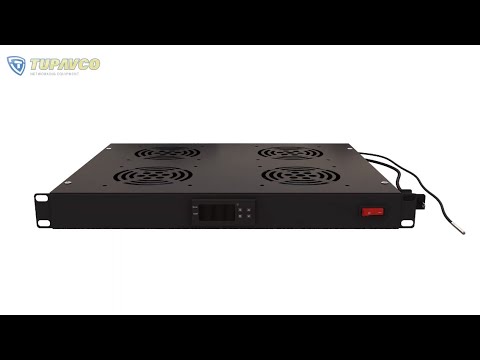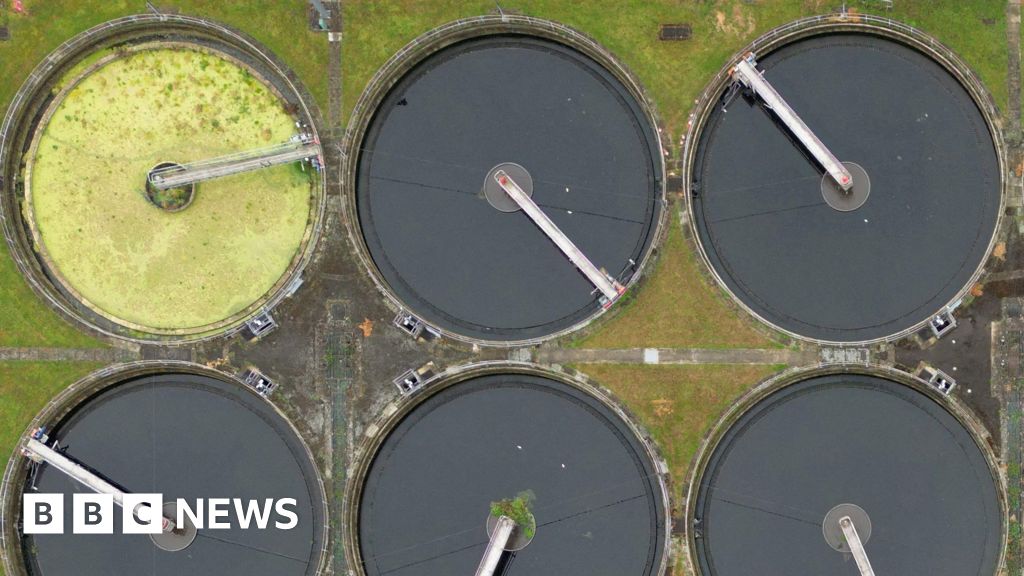Technology
Chevy’s cheapest Silverado EV now starts at $57,095

Chevy also added several additional versions of the electric truck with varying ranges compared to the outgoing 2024 model with only one version, the RST trim, priced at nearly $100,000. While a top-of-the-line “max range” version is still there, for 2025, Chevy will make a cheaper RST starting at $89,395 that has a shorter 390-mile EPA range.
Chevy says it will reveal the $57K work truck’s range closer to launch, but there’s also a Max Range version with 492 miles of EPA range for $77,795. Ford similarly offers a “Pro” version of its F-150 Lightning of the F-150 Lightning electric truck that has fewer bells and whistles than the other models, which starts at $54,995 with 240 miles of range.
The version most people will probably see on dealer lots is the new Silverado EV LT, which starts at $75,195 and has an EPA-estimated 408 miles on a full charge. The LT trucks get 645 horsepower, 12,500-pound towing capacity, 1,800-pound payload, and can charge up to 300kW DC speed (there’s no mention about Chevy including a built-in NACS plug for 2025). If you want SuperCruise, however, you’ll need to pay more for the premium package.
Chevy will ship most of the 2025 Silverados to customers later this year — but the cheapest model won’t come until “later in the model year.”
Technology
Amazon’s 2024 Fire HD 8 tablet is already on sale for Prime Day

Amazon updated its Fire HD 8 lineup last week and promptly put the tablet on sale for Prime Day. The 2024 model has more RAM, a better camera setup and built-in AI features to make it different from its predecessor. The device, which will usually start at $100 (with lock-screen ads), has been discounted to $55 for October Prime Day.
As its name suggests, the new Fire HD 8 has an 8-inch display with a 1280 x 800 resolution (189 ppi). One of the 2024 model’s big upgrades is 3GB of RAM in the base storage tier (32B). Meanwhile, the 64GB variant slides up to 4GB of RAM. Of course, this is a budget tablet, so those aren’t close to barrier-breaking numbers. But that’s still 50 to 100 percent higher than the 2GB of RAM in the 2022 model.
Save big on Amazon’s just-announced Fire HD 8 tablet for 2024.
Amazon rates the Fire HD 8 for up to 13 hours of battery life. The tablet’s rear camera is 5MP. (That’s the same as the “Plus” version of its 2022 predecessor, but it’s higher than the 2MP in the old standard version.)
The tablets will include some generative AI capabilities. Like Apple’s early take on AI in its 2024 updates, these include a Writing Assist feature that can jot out messages based on prompts. It can also summarize web pages, make grammar suggestions and tweak brevity.
There will also be two kids’ versions of the tablet: the Fire HD 8 Kids and Fire HD 8 Kids Pro. As you’d expect from Amazon’s child-focused variants, these versions will include a “kid-proof” case in Disney-branded designs (including Pixar Cars, Disney Princess or Marvel Avengers). They also come with a subscription to Amazon Kids+, the company’s content delivery service (including mobile games!) for the kiddos.
The Fire HD 8 is available now from Amazon, starting at $55 for Prime Day (usually $100). The Fire HD 8 Kids tablet typically starts at $140 but is on sale for $70 for Prime Day.
Follow @EngadgetDeals on Twitter for the latest tech deals and buying advice, and stay tuned to Engadget.com for all of the best tech deals coming out of October Prime Day 2024.
Servers computers
Tupavco TP1701 – Rack Mount Fan – 4 Fans Server Cooling System – How To Video

Buy now: https://www.tupavco.com/products/tupavco-1u-19-rack-mount-fan-4-fans-server-cooling-system-heat-monitor-display
This unit finds use in a wide variety of situations, from home theater setups to server and computer network cabinets, to music and DJ equipment racks, and audio-video (AV) subtracts. The four high volume cabinet fans pump out 300 CFM of air through a top exhaust, providing a healthy flow stream to keep your setup cool.
The server cooler system is controlled by an easy to use, user-friendly programmable controller set through an LCD display screen, which is used to monitor the temperature of the system through a probe attached to the fan cabinet, telling the fan when to turn on. Automatic adjustments are then made accordingly to keep the airflow of the rackmount optimal. This keeps your valuable equipment operating at the temperature range of peak performance and is a safety check against overheating.
To set the minimum temperature at which the thermostat tells the fans to turn on, press the “S” button on the display. At this point, the display should start to blink. Then, adjust the displayed temperature with the up/down arrows by the display. This is the set “ON/OFF” Fahrenheit temperature for the system. Press the “R” button or wait until the display stops blinking to lock the temperature. .
source
Technology
Foxconn to build Taiwan’s fastest AI supercomputer with Nvidia Blackwell

Join our daily and weekly newsletters for the latest updates and exclusive content on industry-leading AI coverage. Learn More
Nvidia and Foxconn are building Taiwan’s largest supercomputer using Nvidia Blackwell chips.
The project, Hon Hai Kaohsiung Super Computing Center, revealed Tuesday at Hon Hai Tech Day, will be built around Nvidia’s Blackwell graphics processing unit (GPU) architecture and feature the GB200 NVL72 platform, which includes a total of 64 racks and 4,608 Tensor Core GPUs.
With an expected performance of over 90 exaflops of AI performance, the machine would easily be considered the fastest in Taiwan.
Foxconn plans to use the supercomputer, once operational, to power breakthroughs in cancer research, large language model development and smart city innovations, positioning Taiwan as a global leader in AI-driven industries.
Foxconn’s “three-platform strategy” focuses on smart manufacturing, smart cities and electric vehicles. The new supercomputer will play a pivotal role in supporting Foxconn’s ongoing efforts in digital twins, robotic automation and smart urban infrastructure, bringing AI-assisted services to urban areas like Kaohsiung.
Construction has started on the new supercomputer housed in Kaohsiung, Taiwan. The first phase is expected to be operational by mid-2025. Full deployment is targeted for 2026.
The project will integrate with Nvidia technologies, such as Nvidia Omniverse and Isaac robotics platforms for AI and digital twins technologies to help transform manufacturing processes.

“Powered by Nvidia’s Blackwell platform, Foxconn’s new AI supercomputer is one of the most powerful in the world, representing a significant leap forward in AI computing and efficiency,” said Foxconn vice president James Wu, in a statement.
The GB200 NVL72 is a state-of-the-art data center platform optimized for AI and accelerated computing.
Each rack features 36 Nvidia Grace CPUs and 72 Nvidia Blackwell GPUs connected via Nvidia’s NVLink technology, delivering 130TB/s of bandwidth.
Nvidia NVLink Switch allows the 72-GPU system to function as a single, unified GPU. This makes it ideal for training large AI models and executing complex inference tasks in real time on trillion-parameter models.
Taiwan-based Foxconn, officially known as Hon Hai Precision Industry Co., is the world’s largest electronics manufacturer, known for producing a wide range of products, from smartphones to servers, for the world’s top technology brands. Foxconn is building digital twins of its factories using Nvidia Omniverse, and Foxconn was also one of the first companies to use Nvidia NIM microservices in
the development of domain-specific large language models, or LLMs, embedded into a variety of internal systems and processes in its AI factories for smart manufacturing, smart electric vehicles and smart cities.
Source link
Science & Environment
Water companies to return £158m on bills over poor performance

Water companies have been ordered to return £158m to customers via lower bills next year after missing key targets on issues like pollution.
The industry regulator Ofwat announced the rebate following its annual review of water and wastewater companies’ performance in England and Wales.
Chief executive David Black warned companies that “money alone” would not solve the issue and there needed to be a change in culture.
Industry body Water UK have been approached for a comment.
Ofwat assesses the performance of the 17 largest water and wastewater companies in England and Wales each year against key targets for issues such as sewer flooding, supply interruptions and water leaks.
For the second year in a row, no company achieved the top rating, although four companies did show an improvement from last year.
“Companies must implement actions now to improve performance… and not wait till government or regulators ask them to act,” David Black said.
For the worst performing companies, failure to meet the targets means they will now have to collectively return £157.6m to customers on their bills for 2025-2026.
However, this is only expected to amount to a reduction of a few pounds on bills and will be dwarfed by the expected long-term increase of £94 per household over the next five years, which Ofwat is currently proposing.
This price rise is still being negotiated with water companies, who argue that even higher bills are needed if they are to afford the infrastructure improvements required to tackle some of the issues raised in this performance report.
Technology
French biotech Generare speeds up hunt for new drugs by cloning natural molecules

French biotech startup Generare has closed a €5 million seed round (around $5.5 million at current exchange rates) to step up development of what it touts as a highly scalable approach to identifying promising compounds for drug discovery that already exist in nature. It’s focused on sifting for molecules that are produced by microorganisms but could be repurposed as treatments in humans.
Such molecules were once a rich source of drug discovery using early chemistry-based discovery techniques. The cardinal example is Penicillium’s antibiotic effect that was spotted after the mold happened to grow in a lab petri.
But finding less common molecules that could become the basis for new antibiotics, anticancer or other drugs requires a new kind of approach that can sift through large amounts of genetic material, says Generare co-founder and chief science officer Dr Vincent Libis.
“We are really interested in discovering chemical molecules produced by bacteria,” he explains. “They encode them in genes — which is basically [a] genetic recipe for [a] molecule. And so what we are hunting for is these genetic recipes. And our technologies are all focused on detecting novel genetic recipes and then manipulating them to obtain the molecules that they encode.”
“So [it’s] a lot of molecular biology to sequence DNA, to cut and paste DNA, and bioinformatics, or computational biology, to triage which one of these genetic recipes you want to go after first, and what do you expect the molecules that they encode are gonna be like.”
Drug hunting ‘on a planetary scale’
Founded in October 2022, the startup says it’s devised a technique that relies upon cloning and biosynthetics to break up the genetic material of microorganisms into millions of fragments to allow for speedier analysis — making it much quicker and easier to identify new molecules of interest.
Although still young for a biotech, Generare has already been able to identify more than 1,000 “genetic recipes”, as it calls the molecules of interest, since it began operating its discovery platform 12 months ago. Part of this early haul includes more than 100 “novel” chemical molecules with a handful that have antibiotic activities.
The approach it’s taking depends on scaling this up to cast a very wide net so it can crunch through masses of genetic material to find the minority of useful compounds hiding amid the dirt.
“Because these molecules are very successful, the more you find, the more chances you have of finding the next billion dollar drug, basically,” CEO and co-founder Guillaume Vandenesch tells TechCrunch. “It’s like you’re playing a board game and you’re trying to get a double six — but you’re throwing like 100 or 1000 dice at a time.
Generare is drawing on around a decade of work by Libis in genetic engineering which underpins its approach. Essentially the method involves taking DNA extracted from a microorganism that codes for a natural molecule, putting the genetic recipe into a lab host and producing (he calls it printing) the molecule in a test tube — “where you can really interrogate it”.
The startup says this method allows it to explore the entire chemical diversity of microbes. It also talks about its platform enabling scanning for novel genetic recipes “on a planetary scale” as a result of how efficiently it’s able to conduct the search.

“If you want to explore the entire map of natural molecules that are produced by microbes you need to have a technology that is extremely efficient, extremely cost efficient,” stresses Vandenesch.
DNA sequencing has been used in drug development for around 15 years, per Libis. More recently, about five years ago, a wave of startup began using DNA sequencing to mine natural molecules specifically. Generare is aiming to improve on earlier efforts by accelerating the analysis of the genetic material.
It’s patenting its approach and what Libis refers to as “the most mathematically efficient implementation” of it.
“What we bring to the table, the really differentiating technology, is at which scale we can do this,” he tells TechCrunch. “We really have orders of magnitude faster ability to get from a genetic recipe — unknown — to a molecule in a test tube. And this is enabled by our, let’s call it, cloning technology, which just pieces out the strands of DNA that contains this genetic recipe very quickly into a laboratory strain so that we can express and then characterize the activity.”
He likens the process to removing a blindfold which reveals the genetic diversity of the molecules. By doing that at scale the startup can organize and group compounds into groups which looks the same; groups which make already patented molecules (which it avoids); and groups which look like they might encode promising molecules. “So you have a much more orderly search that is enabled by this — by using DNA as a guide,” he adds.
“I worked for pretty much 10 years on finding a solution to the speed at which we could take a piece of DNA and bring it to another laboratory strain, which was the bottleneck of this whole process,” Libis continues. “We stumbled on a solution — where we gained orders of magnitude faster ability to transfer these genes. And so that’s what motivated the start of the company.
“That’s our really differentiating element… So it’s just a lot of research,” he adds.
Digging in the dirt
Soils are Generare’s initial choice for scaling this natural molecules search on account of how many microorganisms they contain and the ancient “war” of survival/supremacy that’s been waged between the countless microscopic entities living in the ground. It encourages the development of novel chemical protections against things like bacteria or fungi or other threats.
“In the soil, you have 1,000 species [of bacteria] per gram and it’s on the whole planet,” says Libis, adding: “This war is [waged] through chemical weapons — which are these molecules — and so they’ve been ‘innovating’, the war has been going on for hundreds of millions of years.”
Identifying more of the “really powerfully chemistry” that’s evolved through natural processes, whereby one biological entity develops a tool “to mess with the biology of another organism”, and putting it to “good use” in the human body is Generare’s core mission.
“These bacteria evolved for 400 million years. They’ve probably invented a lot of things that could be very valuable to us,” adds Vandenesch. “There’s so many different organic organisms that are adapted to so many different conditions… basically there is a treasure trove that’s ready to be discovered.”
Beyond soil microbes, the startup says marine environments offer another vast hunting ground where it can apply its approach.
“Really the exciting thing, in a way, is we know only 3% of all these chemicals that are made by microbes,” Libis adds.
“[Humanity has] only discovered 3%… so a large reservoir still needs to be explored.”
“We know that we only found 3% because we see 97% more genes than we see known molecules.”
Industrializing a decade of research
So far Generare has secured an agreement with French biotech company Aurobac Therapeutics to pilot its technology. It’s a company that’s focused on developing new antibiotics.
The new seed funding will be used to industrialize its gene transfer approach so it can figure out how to scale up by turning its lab-based processes into more of a factory-style production line — that’s as lean and streamlined as possible.
“The vision is to go planetary scale exploration of what used to be the most successful modality in the history of pharma and agrochemistry as well,” says Libis. “But basically, the next two years, we are just trying to make it ready for the prime time — where we go after the whole world, basically.”
Its business model will see it engaging in “co-development” of drugs with pharmaceutical companies — with the goal of earning a return on any “valuable bioactive molecules” it has brought to the attention of its partners.
Given the long timescales involved in bringing new drugs to market, Generare confirms the startup will be looking to raise further funding, likely in a couple of years.
“Our dream is like, in 18 months, we have the blueprints of the faculty, you know, meter per meter, exactly what each step is doing and what equipment is needed,” he adds. “Then that’s what we will be fundraising for — to build this in real life.”
The company also believes its platform could also have applications in other sectors, such as supporting development of new agri-chemicals with natural molecules to replace traditional pesticides and insecticides. There could even be uses in the cosmetics industry. But its initial focus is on pharmaceuticals where there is a pressing need.
Antibiotics resistance is a growing problems so there’s a clear need to rethink drug discovery. However Libis also warns the key issue is the broken business model which needs governments to step in with subsidies if humanity is to avoid a full-blown crisis of treatment failure.
“Antibiotics are just a broken market,” he says. “Economically, it’s very hard to have a viable business model when you discover antibiotics. It’s such a commodity once you have them. And also, people don’t use the most powerful ones, so companies that discover them have a hard time getting back their R&D expenses. So what we need is, in fact, mostly a governmental answer — at the EU scale, at the US scale — that will inject some guarantee that the company that invests in R&D and antibiotics will get a return on their investment.”
“There’s hope,” he adds. “There’s the PASTEUR Act in the U.S. that might pass and offer this kind of guarantee, and the EU as well is working actively. But it’s really urgent that something happens there. So for now, we are taking the risk, and we managed to convince our investors that we should be working on this activity, that the landscape is going to change and that there’s going to be, like, subsidies to compensate. But it’s daily struggle.”
“For two years we will manage to bend their mind. But in five years, if nothing has changed at some point we will be forced to also refocus on more guaranteed indications.”
Investors in Generare’s seed include Teampact.ventures, Galion.exe and EU-backed VIVES Partners. Synbioven, Saras Capital and Better Angle also participated, along with a number of business angels.
With so many molecules lurking somewhere out there waiting to be discovered, Generare doesn’t sound worried about competitors raiding nature’s treasures before its had a chance to apply its high scale sifting methodology. But it name-checks the likes of U.S.-based Hexagon Biosciences and LifeMine Therapeutics as playing in the same arena.
Servers computers
Rackmount Air Conditioning?!?!?!? IT'S A THING!

Video Sponsored by Ridge Wallet: https://www.ridge.com/CRAFT
Use Code “CRAFT” for 10% off your order!
How do you keep servers cool without building a dedicated cold room? You cool the rack! Today, I’ll be installing the Tripp Lite SRCOOL7KRM into my home server rack, and pushing all of the heat generated by the rack out of the house. Why cool down my 900 SQFT, uninsulated garage when I can cool just the rack itself?
A massive shoutout to Tripp Lite for sending over the SRCOOL7KRM and ducting kit to make this project possible.
*Links to items below may be affiliate links for which I may be compensated*
Check out the Tripp Lite SRCOOOL7KRM on Amazon: https://amzn.to/34SYN6I
Duct Kit for SRCOOL7KRM: https://amzn.to/32L6Wrg
Here’s that sick Cloud LED sign: https://amzn.to/3biSzhD
Other parts from my rack…
Ubiquiti UniFi UDM-Pro Firewall/Switch/NVR – https://amzn.to/3ldy0Ib
Ubiquiti UniFi USW-24-PoE Gen2 Switch: https://amzn.to/31ke0f0
SuperMicro SC846 24-Bay Chassis: https://amzn.to/2WVrn1I
Ubiquiti UniFi nanoHD: https://amzn.to/2T93WkB
Ubiquiti UniFi AC-PRO: https://amzn.to/2z2NXxn
Ubiquiti UniFi Security Gateway: https://amzn.to/3dShM2H
Mikrotik CSS326-24G-2S+RM 1/10-Gig switch: https://amzn.to/3bCtwEI
Mikrotik CRS328-24P-4S+RM 24-Port PoE+ 1/10-Gig switch: https://amzn.to/2Z6GOXz
8-Port VGA KVM Switch with USB and Remote: https://amzn.to/2X2bLt8
HGST He8 8TB SAS Disk: https://amzn.to/3laQfhk
Find the parts I recommend on my Amazon store: https://www.amazon.com/shop/craftcomputing
Follow me on Twitter @CraftComputing
Support me on Patreon and get access to my exclusive Discord server. Chat with myself and the other hosts on Talking Heads all week long. https://www.patreon.com/CraftComputing
Music:
Poppers and Prosecco by Kevin MacLeod
Link: https://incompetech.filmmusic.io/song/4231-poppers-and-prosecco
License: http://creativecommons.org/licenses/by/4.0/ .
source
-

 Womens Workouts2 weeks ago
Womens Workouts2 weeks ago3 Day Full Body Women’s Dumbbell Only Workout
-

 Science & Environment3 weeks ago
Science & Environment3 weeks agoHow to unsnarl a tangle of threads, according to physics
-

 Science & Environment3 weeks ago
Science & Environment3 weeks agoHyperelastic gel is one of the stretchiest materials known to science
-

 Technology3 weeks ago
Technology3 weeks agoWould-be reality TV contestants ‘not looking real’
-

 Science & Environment3 weeks ago
Science & Environment3 weeks agoMaxwell’s demon charges quantum batteries inside of a quantum computer
-

 Science & Environment3 weeks ago
Science & Environment3 weeks ago‘Running of the bulls’ festival crowds move like charged particles
-

 News2 weeks ago
News2 weeks agoOur millionaire neighbour blocks us from using public footpath & screams at us in street.. it’s like living in a WARZONE – WordupNews
-
News3 weeks ago
the pick of new debut fiction
-

 Science & Environment3 weeks ago
Science & Environment3 weeks agoHow to wrap your mind around the real multiverse
-

 Science & Environment3 weeks ago
Science & Environment3 weeks agoSunlight-trapping device can generate temperatures over 1000°C
-

 Science & Environment3 weeks ago
Science & Environment3 weeks agoQuantum ‘supersolid’ matter stirred using magnets
-

 Science & Environment3 weeks ago
Science & Environment3 weeks agoITER: Is the world’s biggest fusion experiment dead after new delay to 2035?
-

 Science & Environment3 weeks ago
Science & Environment3 weeks agoLiquid crystals could improve quantum communication devices
-

 Science & Environment3 weeks ago
Science & Environment3 weeks agoQuantum forces used to automatically assemble tiny device
-

 Science & Environment3 weeks ago
Science & Environment3 weeks agoPhysicists are grappling with their own reproducibility crisis
-

 Science & Environment3 weeks ago
Science & Environment3 weeks agoWhy this is a golden age for life to thrive across the universe
-

 News3 weeks ago
News3 weeks agoYou’re a Hypocrite, And So Am I
-

 Sport3 weeks ago
Sport3 weeks agoJoshua vs Dubois: Chris Eubank Jr says ‘AJ’ could beat Tyson Fury and any other heavyweight in the world
-

 Science & Environment3 weeks ago
Science & Environment3 weeks agoTime travel sci-fi novel is a rip-roaringly good thought experiment
-

 Science & Environment3 weeks ago
Science & Environment3 weeks agoLaser helps turn an electron into a coil of mass and charge
-

 Science & Environment3 weeks ago
Science & Environment3 weeks agoCaroline Ellison aims to duck prison sentence for role in FTX collapse
-

 Science & Environment3 weeks ago
Science & Environment3 weeks agoNuclear fusion experiment overcomes two key operating hurdles
-
Business1 week ago
Eurosceptic Andrej Babiš eyes return to power in Czech Republic
-

 Technology1 week ago
Technology1 week ago‘From a toaster to a server’: UK startup promises 5x ‘speed up without changing a line of code’ as it plans to take on Nvidia, AMD in the generative AI battlefield
-

 Football1 week ago
Football1 week agoFootball Focus: Martin Keown on Liverpool’s Alisson Becker
-

 Science & Environment3 weeks ago
Science & Environment3 weeks agoRethinking space and time could let us do away with dark matter
-

 Science & Environment3 weeks ago
Science & Environment3 weeks agoNerve fibres in the brain could generate quantum entanglement
-

 News3 weeks ago
News3 weeks ago▶️ Hamas in the West Bank: Rising Support and Deadly Attacks You Might Not Know About
-

 MMA1 week ago
MMA1 week agoConor McGregor challenges ‘woeful’ Belal Muhammad, tells Ilia Topuria it’s ‘on sight’
-

 News3 weeks ago
News3 weeks ago▶️ Media Bias: How They Spin Attack on Hezbollah and Ignore the Reality
-

 News3 weeks ago
News3 weeks agoNew investigation ordered into ‘doorstep murder’ of Alistair Wilson
-

 Science & Environment2 weeks ago
Science & Environment2 weeks agoX-rays reveal half-billion-year-old insect ancestor
-
Business1 week ago
Should London’s tax exiles head for Spain, Italy . . . or Wales?
-

 News3 weeks ago
News3 weeks agoIsrael strikes Lebanese targets as Hizbollah chief warns of ‘red lines’ crossed
-

 Science & Environment3 weeks ago
Science & Environment3 weeks agoA slight curve helps rocks make the biggest splash
-

 Science & Environment3 weeks ago
Science & Environment3 weeks agoFuture of fusion: How the UK’s JET reactor paved the way for ITER
-

 Science & Environment3 weeks ago
Science & Environment3 weeks agoA new kind of experiment at the Large Hadron Collider could unravel quantum reality
-

 Science & Environment3 weeks ago
Science & Environment3 weeks agoUK spurns European invitation to join ITER nuclear fusion project
-

 CryptoCurrency3 weeks ago
CryptoCurrency3 weeks agoCardano founder to meet Argentina president Javier Milei
-

 News2 weeks ago
News2 weeks agoWhy Is Everyone Excited About These Smart Insoles?
-

 Science & Environment2 weeks ago
Science & Environment2 weeks agoMeet the world's first female male model | 7.30
-

 Technology2 weeks ago
Technology2 weeks agoGet ready for Meta Connect
-

 Health & fitness1 week ago
Health & fitness1 week agoThe 7 lifestyle habits you can stop now for a slimmer face by next week
-

 Science & Environment3 weeks ago
Science & Environment3 weeks agoWhy we need to invoke philosophy to judge bizarre concepts in science
-

 CryptoCurrency3 weeks ago
CryptoCurrency3 weeks agoLow users, sex predators kill Korean metaverses, 3AC sues Terra: Asia Express
-

 Womens Workouts2 weeks ago
Womens Workouts2 weeks agoBest Exercises if You Want to Build a Great Physique
-

 Womens Workouts2 weeks ago
Womens Workouts2 weeks agoEverything a Beginner Needs to Know About Squatting
-

 News2 weeks ago
News2 weeks agoFour dead & 18 injured in horror mass shooting with victims ‘caught in crossfire’ as cops hunt multiple gunmen
-

 Technology2 weeks ago
Technology2 weeks agoRobo-tuna reveals how foldable fins help the speedy fish manoeuvre
-

 Technology1 week ago
Technology1 week agoQuantum computers may work better when they ignore causality
-

 CryptoCurrency3 weeks ago
CryptoCurrency3 weeks agoEthereum is a 'contrarian bet' into 2025, says Bitwise exec
-

 Health & fitness3 weeks ago
Health & fitness3 weeks agoThe secret to a six pack – and how to keep your washboard abs in 2022
-
Business3 weeks ago
JPMorgan in talks to take over Apple credit card from Goldman Sachs
-

 Science & Environment3 weeks ago
Science & Environment3 weeks agoQuantum time travel: The experiment to ‘send a particle into the past’
-

 Science & Environment3 weeks ago
Science & Environment3 weeks agoBeing in two places at once could make a quantum battery charge faster
-

 Science & Environment3 weeks ago
Science & Environment3 weeks agoA tale of two mysteries: ghostly neutrinos and the proton decay puzzle
-

 CryptoCurrency3 weeks ago
CryptoCurrency3 weeks agoBitcoin miners steamrolled after electricity thefts, exchange ‘closure’ scam: Asia Express
-

 CryptoCurrency3 weeks ago
CryptoCurrency3 weeks agoDorsey’s ‘marketplace of algorithms’ could fix social media… so why hasn’t it?
-

 CryptoCurrency3 weeks ago
CryptoCurrency3 weeks agoDZ Bank partners with Boerse Stuttgart for crypto trading
-

 CryptoCurrency3 weeks ago
CryptoCurrency3 weeks agoBitcoin bulls target $64K BTC price hurdle as US stocks eye new record
-

 CryptoCurrency3 weeks ago
CryptoCurrency3 weeks agoBlockdaemon mulls 2026 IPO: Report
-
News3 weeks ago
The Project Censored Newsletter – May 2024
-
Politics3 weeks ago
UK consumer confidence falls sharply amid fears of ‘painful’ budget | Economics
-

 TV2 weeks ago
TV2 weeks agoCNN TÜRK – 🔴 Canlı Yayın ᴴᴰ – Canlı TV izle
-

 Science & Environment2 weeks ago
Science & Environment2 weeks agoCNN TÜRK – 🔴 Canlı Yayın ᴴᴰ – Canlı TV izle
-

 Womens Workouts2 weeks ago
Womens Workouts2 weeks ago3 Day Full Body Toning Workout for Women
-

 Servers computers2 weeks ago
Servers computers2 weeks agoWhat are the benefits of Blade servers compared to rack servers?
-

 News2 weeks ago
News2 weeks agoUS Newspapers Diluting Democratic Discourse with Political Bias
-

 Technology1 week ago
Technology1 week agoThe best robot vacuum cleaners of 2024
-

 Sport1 week ago
Sport1 week agoWatch UFC star deliver ‘one of the most brutal knockouts ever’ that left opponent laid spark out on the canvas
-

 Politics3 weeks ago
Politics3 weeks agoTrump says he will meet with Indian Prime Minister Narendra Modi next week
-

 Sport3 weeks ago
Sport3 weeks agoUFC Edmonton fight card revealed, including Brandon Moreno vs. Amir Albazi headliner
-

 Science & Environment3 weeks ago
Science & Environment3 weeks agoHow one theory ties together everything we know about the universe
-

 News3 weeks ago
News3 weeks agoBrian Tyree Henry on voicing young Megatron, his love for villain roles
-

 Technology3 weeks ago
Technology3 weeks agoThe ‘superfood’ taking over fields in northern India
-

 Science & Environment3 weeks ago
Science & Environment3 weeks agoTiny magnet could help measure gravity on the quantum scale
-

 Science & Environment3 weeks ago
Science & Environment3 weeks agoHow do you recycle a nuclear fusion reactor? We’re about to find out
-

 CryptoCurrency3 weeks ago
CryptoCurrency3 weeks agoDecentraland X account hacked, phishing scam targets MANA airdrop
-

 CryptoCurrency3 weeks ago
CryptoCurrency3 weeks agoRedStone integrates first oracle price feeds on TON blockchain
-

 CryptoCurrency3 weeks ago
CryptoCurrency3 weeks ago‘No matter how bad it gets, there’s a lot going on with NFTs’: 24 Hours of Art, NFT Creator
-
Business3 weeks ago
Thames Water seeks extension on debt terms to avoid renationalisation
-
Business3 weeks ago
How Labour donor’s largesse tarnished government’s squeaky clean image
-
Politics3 weeks ago
‘Appalling’ rows over Sue Gray must stop, senior ministers say | Sue Gray
-

 News3 weeks ago
News3 weeks agoBrian Tyree Henry on voicing young Megatron, his love for villain roles
-

 CryptoCurrency3 weeks ago
CryptoCurrency3 weeks agoCoinbase’s cbBTC surges to third-largest wrapped BTC token in just one week
-

 MMA2 weeks ago
MMA2 weeks agoRankings Show: Is Umar Nurmagomedov a lock to become UFC champion?
-

 Travel2 weeks ago
Travel2 weeks agoDelta signs codeshare agreement with SAS
-

 Politics2 weeks ago
Politics2 weeks agoHope, finally? Keir Starmer’s first conference in power – podcast | News
-
Business7 days ago
Ukraine faces its darkest hour
-

 News3 weeks ago
News3 weeks agoChurch same-sex split affecting bishop appointments
-

 Technology3 weeks ago
Technology3 weeks agoiPhone 15 Pro Max Camera Review: Depth and Reach
-

 Health & fitness3 weeks ago
Health & fitness3 weeks agoThe maps that could hold the secret to curing cancer
-

 CryptoCurrency3 weeks ago
CryptoCurrency3 weeks agoCrypto scammers orchestrate massive hack on X but barely made $8K
-

 CryptoCurrency3 weeks ago
CryptoCurrency3 weeks agoSEC asks court for four months to produce documents for Coinbase
-

 CryptoCurrency3 weeks ago
CryptoCurrency3 weeks ago‘Silly’ to shade Ethereum, the ‘Microsoft of blockchains’ — Bitwise exec
-

 Womens Workouts2 weeks ago
Womens Workouts2 weeks agoHow Heat Affects Your Body During Exercise
-

 Womens Workouts2 weeks ago
Womens Workouts2 weeks agoKeep Your Goals on Track This Season
-

 Science & Environment3 weeks ago
Science & Environment3 weeks agoSingle atoms captured morphing into quantum waves in startling image
-

 News3 weeks ago
News3 weeks agoHow FedEx CEO Raj Subramaniam Is Adapting to a Post-Pandemic Economy
-

 CryptoCurrency3 weeks ago
CryptoCurrency3 weeks agoTelegram bot Banana Gun’s users drained of over $1.9M


You must be logged in to post a comment Login